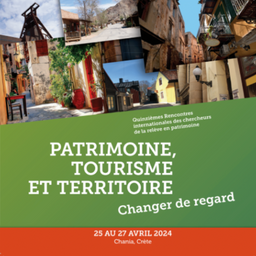Interactions between cultural tourism and mass tourism
My Session Status
Nektarios Kefalogiannis, architectural engineer at the Technical University of Crete, chairs this second session, which explores the relationship between mass tourism and cultural tourism. These two tourism practices, often seen as incompatible, are not read here in a dichotomous way: rather, the proposals question the spaces and times in which these logics meet. Through them, heritage issues enter into dialogue with differentiated forms of tourism. Steven Damerval examines the future and heritage of a mass tourism model, the "Far West" zones in theme parks, which are no longer a success today. Hélène Roux examines the heritage development of Beijing's Shougang industrial sector, which, after hosting the mega-event of the 2022 Olympic Games, is now looking for a more local tourism future. Sarah Turcotte asks how the logics of heritage and the commercial and communicational logics of the Musée national des beaux-arts du Québec are compatible in the project to promote Montreal artist Jean Paul Riopelle.
Sub Sessions
Disneyland Park (1955, USA) became the model for a globalized leisure industry, thanks to its practice of thematization in this planned space; a park that a few months later would be called a “theme park” to differentiate it from previous amusement parks. Disneyland’s success in attracting and retaining visitors-consumers meant that its model could be transferred to other territories. What’s more, Fron...
To coincide with the 2022 Winter Olympics, the former Shougang steelworks, built in Beijing from 1919 onwards, has been the subject of a rehabilitation and regeneration project, both to host winter sports events and with a view to becoming a new urban hub for the Chinese capital in the longer term. The redevelopment of this heritage is part of a national strategy to promote industrial know-how and hist...
Over the past few decades, many major Western art museums have evolved from institutions into “cultural market organizations,” adopting a managerial management style with strategic aims, developing business partnerships, and becoming players in the art, entertainment, and tourism markets. The idea was to mobilize more and more visitors and develop autonomy in a context of diminishing public funding. Th...


Discussion